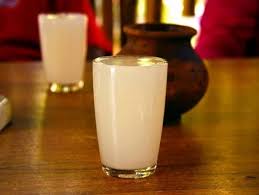Palm Wine Preservation and Bottling in Nigeria; The Feasibility Report.

Palm wine is a hugely popular beverage in many parts of West and Central Africa and consumed by millions of people in both regions.
Palm wine has a lovely presence and tastes like something between beer and grape wine.
Known by several names, it is commonly referred to as ‘pami’, ‘emu’ and ‘nkwu’ in Nigeria, ‘nsamba’ in Congo, ‘nsfufuo’ in Ghana and ‘matango’ in Cameroun.
Palm wine enjoys a strong cultural identity and significance in these countries and is usually the preferred drink during traditional ceremonies and events (such as weddings and funerals).
Palm wine is a cloudy white drink produced from the sap of various species of palm trees which are abundant in Africa’s dense tropical rain forest regions.
It is traditionally extracted by a ‘tapper’ and the quantity of sap that can be taken from one palm tree depends on the mode of extraction, the palm species, season and the fertility of the soil.
Freshly collected palm wine is very sweet and non-alcoholic. However, fermentation begins naturally and immediately after collection. As time progresses, the wine becomes more alcoholic and has some sourness and acidity to it.
Palm-wine is traditionally a social drink of the rural people, but in recent times, it has also become a favourite among city dwellers. The palm trees from which palm-wine is derived grow extensively in the southern part of the country, especially the riverine areas. Much of the palm-wine wastes away through lack of proper preservation method, because it goes sour after twenty-four (24) hours if not properly preserved by scientific means.
A preservation method for palm-wine has been perfected locally. It involves pasteurizing and bottling of the palm-wine, which increases its shell-life to over six months.
The preservation and bottling of the palm wine is achieved by arresting the activities of yeast, thus stopping the fermentation of the product. The preserved and bottled palm-wine, so obtained, becomes considerably stable with a maximum alcoholic content of four percent (4%) v/v. and can be cheaply bottled in beer bottles and corked with crown corks.
This method of palm-wine preservation makes it more hygienic and consequently more attractive to the city dwellers. The equipment required is simple to operate and is fabricated locally.
The demand for bottled palm wine cuts across social, economic and religious strata. The demand for bottled palm wine is estimated at 29.2 million litres per annum. The current level of supply is about twenty percent (20%) of the demand estimate.
The equipment required for production are Stainless Steel Pasteurizer, Stainless Steel Mixer, Stainless Steel Holding Tank, Refractometer, pH Meter, Corking Machine, Weighing Scale, Semi-automatic Filling Machine with Stainless Steel Conveyor, Project Vehicle, Generator and Wood Pallets.
The installed capacity of the proposed factory is two thousand (2,000) litres per day of single shift of eight (8) hours each working at ninety percent (90%) of the installed capacity for three hundred (300) working day producing about sixty-two thousand, two hundred and fifty (62,250) cartons of twelve (12) bottles of sixty (60) cl bottle of palm wine bi-monthly.
This report seeks to examine the financial viability or otherwise of preserving and bottling palm wine in Nigeria.
Table of Contents
EXECUTIVE SUMMARY 1.0 Business Overview 1.1 Description of the Business 1.2 Vision and Mission Statement 1.3 Business Objective 1.4 Critical Success Factor of the Business 1.5 Current Status of Business 1.6 Description of the Business Industry 1.7 Contribution to Local and National Economy 2. Marketing Plan 2.1 Description of product 2.2 Product Packaging and delivery 2.3 The Opportunity 2.4 Pricing Strategy 2.5 Target Market 2.6 Distribution and Delivery Strategy 2.7 Promotional Strategy 2.8 Competition 3. Production Plan 3.1 Description of the Location 3.2 Raw Materials 3.3 Production Equipment 3.4 Production Process 3.5 Production Cost 3.6 Stock Control Process 3.7 Pre-Operating activities and expenses 3.7.1 Operating Activities and Expenses 3.8 Project Implementation Schedule 4.0 Organizational and Management Plan 4.1 Ownership of the business 4.2 Profile of the promoters 4.3 Key Management Staff 4.3.2 Management Support Units 4.4 Details of salary schedule 5. Financial Plan 5.1 Financial Assumption 5.2 Start -up Capital Estimation 5.3 Source of Capital 5.4 Security of Loan 5.5 Loan Repayment Plan 5.6 Profit and Loss Analysis 5.7 Cash Flow Analysis 5.8 Viability Analysis 6.0 Business Risk and mitigation factor 6.1 Business Risks 6.2 SWOT Analysis
Project Specification:
Additional Info
Get this Report
Direct bank transfer
To order the report, Please do pay the sum of ₦30,000 into
Account Name : Foraminifera Market Research Ltd
Account Number : 274 20 569 37
Account Name : Foraminifera Market Research Ltd
Account Number : 101 76 603 95
Account Name : Foraminifera Ventures
Account Number : 011 66 066 32
Make your payment directly into our bank account. Please use your Order ID as the payment reference. Your order will not be shipped until the funds have cleared in our account.
Instructions
After payment call us on 01 -29 52 413 / 08033782777 or email us at foraminiferamarketresearch@yahoo.com with the payment details. After payment confirmation, the soft copy of the report would be sent to you within 24 hours.



